To grade a Barber dime, inspect wear on key high points including the hair, cheek, and leaves. For circulated coins, Good (G-4) shows flat details with readable lettering, while Very Fine (VF) to Extremely Fine (EF) displays clearer design elements. Uncirculated coins have no wear on high points and retain original mint luster. Check the hair above the eye, cheek, and leaves for wear indicators. Avoid cleaned coins showing artificial brightness, as they have reduced value. Consider the mint mark on the reverse, strike quality (New Orleans mints are often weak), and natural toning for complete assessment. Eye appeal significantly impacts desirability and value.
Grading a Barber dime accurately can mean the difference between a coin worth $3 and one valued at $300 or more. Unlike modern coins with bold designs, these 1892-1916 silver dimes wear down subtly across Liberty’s portrait and the reverse wreath, making proper grading both challenging and essential. By focusing on three critical high-point areas—the hair above the forehead, the cheek beneath the eye, and the laurel leaves—you can confidently assess whether your coin grades as Good, Fine, Extremely Fine, or reaches the coveted Uncirculated category.
Understanding the Barber Dime Design Before Grading
Charles E. Barber’s Liberty Head design features Lady Liberty in profile on the obverse, wearing a laurel wreath crown and a cap inscribed with “LIBERTY.” The reverse displays a simple wreath of agricultural products encircling the denomination “ONE DIME.” This seemingly straightforward design actually contains numerous subtle details that wear away at predictable rates.
The coin’s highest relief points—where metal rises furthest from the surface—wear first during circulation. On the obverse, these vulnerable areas include the upper hair curls visible above Liberty’s headband, the prominent cheekbone below the eye, and the leaves positioned above the word “LIBERTY” on her headband. The reverse shows earliest wear on the ribbon bow at the wreath’s base and the topmost leaves where they cross near the top.
Understanding these wear patterns helps you distinguish between grade levels that might otherwise appear similar to untrained eyes. A coin grading Very Fine shows clear separation in hair strands, while a Fine example displays these same strands merged together from wear.
Grading Circulated Barber Dimes: Good Through Fine
At the Good-4 grade level, your Barber dime will show heavy circulation with most design elements worn nearly flat. The rim remains completely visible around both sides—an important distinction from Poor grade coins where rims merge into the field. On the obverse, Liberty’s portrait appears as a silhouette with the word “LIBERTY” on the headband barely readable or partially worn away. At least three letters must be visible to qualify for Good-4; fewer letters drops the coin to About Good-3.
The reverse shows equally heavy wear. Individual leaves within the wreath blend together, though you can still distinguish the overall wreath outline. The ribbon bow at the bottom lacks any interior detail. Despite this extensive wear, all major lettering including “UNITED STATES OF AMERICA” and “ONE DIME” remains readable, though letters may be weak in spots.
Moving up to Very Good-8, design elements gain noticeability. The headband now shows “LIBERTY” completely visible, though letters appear worn and shallow. Hair strands near the forehead begin separating into distinct lines rather than appearing as a solid mass. On the cheek, you’ll notice slight contour definition rather than a completely smooth surface. The reverse wreath shows individual leaves starting to separate, particularly near the outer edges where wear affects them less severely.
At Fine-12, the coin displays moderate but even wear across all surfaces. Every letter in “LIBERTY” stands clearly defined with raised edges, though the tops of letters may show slight flattening. Hair detail becomes much more apparent—you can count roughly half of the individual curl lines above the forehead and temple. The upper leaves on Liberty’s laurel crown show separation, though fine interior vein lines remain worn smooth.
Check the cheek area carefully at this grade. You should see definite roundness and contour, though the highest point of the cheekbone shows obvious wear as a slightly flattened area. On the reverse, approximately 75% of leaves show as distinct individuals. The ribbon bow displays clear outline with slight interior detail beginning to appear. Many collectors find Fine-12 Barber dimes offer excellent value, as common dates in this grade typically sell for $8-15 while still showing Liberty’s portrait character.
Identifying Very Fine Through Extremely Fine Grades
Very Fine-20 represents a critical threshold where Barber dimes transition from well-worn to moderately circulated. At this grade level, approximately 75% of original design detail remains visible. The word “LIBERTY” shows complete, bold lettering with all interior spaces between letters deep and clear. Most importantly, hair detail becomes significantly more pronounced.
Above Liberty’s forehead, you should count at least three-quarters of the individual curl lines that radiate from her part line. These curls show clear separation with visible spaces between each strand. The upper laurel leaves on her crown display not only separation but also visible interior veining—fine lines within each leaf that indicate original mint detail. On the cheek, wear appears only as slight flatness on the highest point, while the surrounding area maintains full roundness.
The reverse at Very Fine-20 shows all leaves as separate, distinct elements. The ribbon bow contains clear interior lines showing where the fabric folds. Look closely at the oak leaves (on the right side of the wreath) and wheat stalks (on the left)—you should see definition in the oak leaf veining and separation in the individual wheat kernels.
Extremely Fine-40 specimens retain approximately 85-90% of original detail. The hair becomes the key diagnostic area at this grade. Nearly all curl lines above the forehead show complete separation with only the very highest points exhibiting slight wear. Check the area where hair meets the laurel crown—in Extremely Fine condition, you’ll see crisp definition between the hair strands and the leaves, whereas lower grades show this boundary becoming soft or merged.
Liberty’s cheek should appear fully rounded with only trace wear visible on the cheekbone when examined under magnification. The field area around her portrait—the flat background surface—may show light hairlines from gentle circulation or old cleaning, but the portrait itself maintains sharp, crisp edges.
Moving to Extremely Fine-45, wear becomes minimal. All hair details stand sharply defined except for the slightest softness on the absolute highest curls. The leaves above “LIBERTY” show complete detail including fine veining. On the reverse, every element appears sharp—leaf veins, ribbon folds, wheat kernel separation, and oak leaf details all remain clearly visible.
A common date 1907 Barber dime in Extremely Fine-40 typically sells for $35-50, while the same coin in Extremely Fine-45 commands $60-80, demonstrating how these subtle wear differences significantly impact value.
Distinguishing About Uncirculated From Mint State
About Uncirculated grades—AU-50, AU-53, AU-55, and AU-58—represent coins showing only trace wear on the highest design points while retaining most original mint luster. This category proves challenging for many collectors because distinguishing between slight wear and weak strikes requires practice and careful observation.
At AU-50, examine Liberty’s hair above her forehead under bright, directional lighting. You should see very slight flattening on the topmost two or three curl lines—just enough to dull the sharp, frosty texture that characterized these areas when newly minted. The cheek shows possible trace wear on the highest point, visible as a tiny smooth spot no larger than a pinhead. These wear spots appear distinctly different from the surrounding luster—they look slightly shiny or smooth compared to the frosty texture of unworn surfaces.
The reverse requires equally careful inspection. Check the ribbon bow’s upper loops and the topmost leaves where they cross near the rim. AU-50 coins show trace flatness in these areas—not obvious wear that changes the design shape, but subtle loss of the mint frost texture. Importantly, AU-50 specimens retain at least 50% of original mint luster, typically visible in protected areas like between letters and within the wreath.
AU-55 coins display less wear—perhaps only the slightest trace on Liberty’s cheekbone and the absolute highest hair curl. Mint luster reaches 75% or more, giving the coin significant eye appeal. The difference between AU-55 and AU-58 becomes extremely subtle, primarily based on luster retention rather than wear. AU-58 specimens show questionable wear that might be weak striking rather than circulation, and they retain 90% or more of original luster.
Here’s where weak strikes complicate grading: New Orleans mint Barber dimes frequently show soft detail on hair and leaves even in Mint State condition. A weakly struck MS-60 coin from New Orleans might show less sharp detail than a well-struck AU-55 from Philadelphia or San Francisco. Compare multiple high points—if all areas show similar slight softness, you’re likely seeing weak strike rather than wear. If only the highest points show softness while protected areas remain sharp, that indicates circulation wear.
Professional grading services consider these factors, which explains why AU-58 coins sometimes receive “Details” grades noting weak strike. A 1901-O Barber dime in AU-58 might sell for $150-200, while the same coin in MS-60 jumps to $350-450, making accurate distinction between these grades financially significant.
Evaluating Mint State Barber Dimes
Mint State grading—from MS-60 through MS-70—focuses entirely on preservation quality since these coins show no circulation wear whatsoever. The challenge lies in distinguishing between MS-60 (very low-grade uncirculated), MS-63 (choice uncirculated), MS-65 (gem uncirculated), and higher grades based on surface preservation, strike quality, luster, and eye appeal.
Begin by confirming the coin truly qualifies as Mint State. Using 5x-10x magnification, examine every high point: the hair above Liberty’s forehead, her cheekbone, the upper laurel leaves, and the reverse ribbon bow and top leaves. Mint State coins show absolutely zero wear—the original mint texture remains complete and undisturbed on all these points. If you detect even microscopic smoothness or flatness, the coin grades About Uncirculated at best.
MS-60 represents the lowest Mint State grade. These coins lack wear but show numerous significant contact marks—small nicks, scratches, or dings from coins striking each other in mint bags. An MS-60 Barber dime typically displays several distracting marks on Liberty’s cheek and forehead, with additional marks scattered across the fields (background areas). Luster may appear somewhat subdued or disrupted by the contact marks. Strike quality varies—MS-60 coins may show weak central detail from die wear or insufficient striking pressure.
MS-63 coins demonstrate significantly better surface preservation. While contact marks remain visible, they’re fewer in number and less distracting. The cheek might show one or two small marks rather than multiple heavy ones. Fields display scattered minor marks but no large or immediately obvious detractions. Luster appears strong and relatively unbroken, giving the coin attractive overall appearance despite minor imperfections. Strike should be average or better—most design elements show clear definition.
The jump to MS-65 requires excellent surface preservation. Only minor contact marks can appear, and they must be small and located away from prime focal points like Liberty’s cheek and forehead. Fields should appear relatively clean with just a few trivial marks. Luster must be strong, frosty, and well-preserved, creating attractive light reflection. Strike quality becomes more important at this grade—weak areas on high-grade coins receive greater scrutiny.
Examine this grade comparison for a common-date 1904 Barber dime:
| Grade | Typical Price |
|---|---|
| MS-60 | $135-160 |
| MS-63 | $185-225 |
| MS-64 | $350-425 |
| MS-65 | $650-800 |
MS-66 and higher grades require exceptional preservation rarely seen in Barber dimes. These coins show virtually no contact marks visible to the naked eye, with only minute imperfections detectable under magnification. Luster appears full, vibrant, and completely undisturbed. Strike must be sharp with all design elements crisply defined. Eye appeal becomes crucial—the coin must present an immediately attractive, pleasing appearance.
For Barber dimes, MS-67 and higher grades are extremely rare. Most surviving Mint State examples grade MS-60 through MS-64 because these coins circulated heavily and few were saved in pristine condition. A common date in MS-67 might sell for $3,000-5,000, while the same date in MS-65 brings $700-900.
Detecting Cleaned Coins and Assessing Eye Appeal
Cleaning dramatically reduces a Barber dime’s grade and value, yet many circulated examples show cleaning evidence. Learning to identify cleaning helps you avoid overpaying for damaged coins and understand why apparently nice-looking specimens receive “Details” grades from professional services.
Harsh cleaning leaves obvious signs. Look for hairline scratches running in consistent directions across Liberty’s face and fields—these microscopic parallel lines result from abrasive cleaning with brushes or harsh cloths. Under magnification, cleaned surfaces appear unnaturally bright and reflective compared to the soft, frosty luster of original mint surfaces. High points often show excessive brightness where cleaning removed the natural toning that protected lower areas.
Dipped coins—those cleaned with chemical solutions—present more subtly. The surface appears unnaturally bright and “lifeless,” lacking the vibrant luster of original uncleaned pieces. Colors seem flat and uniform rather than showing natural toning variations. Under magnification, you might detect a slightly etched or porous texture where chemicals attacked the silver surface.
Compare these values for an 1897 Barber dime in apparent Extremely Fine-45 condition:
- Original, problem-free: $55-70
- Lightly cleaned, some luster remains: $30-40
- Harshly cleaned, heavy hairlines: $15-25
- Cleaned and retoned artificially: $20-30
Professional grading services grade cleaned coins as “Details—Cleaned” followed by the technical grade level, such as “AU Details—Cleaned.” This designation immediately signals value reduction compared to problem-free examples.
Eye appeal represents the subjective attractiveness of a coin beyond its technical grade. Two MS-63 Barber dimes might receive identical numerical grades while one sells for $200 and another brings $275 based purely on eye appeal differences. Factors affecting eye appeal include:
Toning quality: Natural toning from long-term storage in paper envelopes or albums creates attractive golden, blue, or rainbow colors that many collectors prize. A beautifully toned MS-63 Barber dime might sell for 25-40% more than a white (untoned) example of the same grade. However, artificial toning—created by applying chemicals or heat—appears unnatural with irregular color patterns and usually reduces value.
Strike quality: Well-struck coins show crisp, complete detail on all design elements, particularly the hair and leaves. Weakly struck specimens lack this sharpness even in Mint State condition. A sharply struck MS-63 commands premium prices over a weakly struck MS-64 because the stronger strike creates better eye appeal.
Surface quality: Even at the same numerical grade, coins with fewer, smaller contact marks placed away from focal points show better eye appeal than examples with larger or more prominent marks. An MS-64 with most marks hidden in hair or wreath details looks more attractive than one with marks scattered across Liberty’s cheek and forehead.
Luster quality: Vibrant, cartwheel luster—the rotating light bands visible when tilting the coin under a lamp—creates exceptional eye appeal. Subdued or disrupted luster reduces attractiveness even without changing the technical grade.
When examining Barber dimes for purchase, consider eye appeal carefully. A problem-free VF-30 with attractive original surfaces and natural golden toning often represents better value than a harshly cleaned EF-40 selling for similar money.
Special Considerations: Mint Marks, Weak Strikes, and Date-Specific Issues
Mint mark location on Barber dimes appears on the reverse below the wreath, centered beneath the ribbon bow. Philadelphia coins bear no mint mark, while “O” indicates New Orleans, “S” denotes San Francisco, and “D” marks Denver production (only for 1916, the final year). Identifying the mint mark correctly proves essential because values vary dramatically by mintage and survival rates.
New Orleans Barber dimes present special grading challenges. The New Orleans Mint frequently produced weakly struck coins where insufficient pressure during striking left design elements soft and ill-defined even on uncirculated pieces. When grading New Orleans coins, compare multiple design areas. If hair, leaves, and other details all show similar softness, you’re observing weak strike rather than wear. If only the highest points appear soft while protected areas remain sharp, that indicates circulation wear.
A 1901-O Barber dime in MS-63 with weak strike might show less sharp hair detail than a well-struck 1901 (Philadelphia) example in AU-58, yet the New Orleans coin still grades higher because it lacks actual wear. Professional graders account for mint-specific characteristics, but learning to recognize them yourself prevents confusion when comparing coins across different mints.
San Francisco Barber dimes typically show excellent strikes with sharp, crisp details. Philadelphia strikes vary by year—some dates show razor-sharp detail while others display softer characteristics. When grading, research your specific date and mint to understand what constitutes normal strike quality versus weak or exceptionally strong strikes.
Certain dates present unique grading considerations. The key date 1894-S, with only 24 pieces struck and approximately 9-10 known to survive, trades based primarily on rarity rather than grade. An 1894-S in Good-4 condition sold for $1.3 million in 2016, while a Proof-63 example brought $1.997 million in 2016. For such rarities, any grade becomes acceptable to most collectors.
Semi-key dates like 1895-O (with 440,000 minted), 1896-O (610,000 minted), and 1901-S (593,022 minted) show significant value differences between grades. A 1895-O in Good-4 sells for $350-450, while Very Fine-20 examples bring $1,800-2,200, and MS-60 specimens command $4,500-6,000. Accurate grading becomes financially critical for these scarcer dates.
Common dates offer opportunities to practice grading skills without major financial risk. A 1907 or 1912 Barber dime in circulated grades costs $3-50 depending on condition, making these dates ideal for building a grading reference collection showing examples from Good through About Uncirculated.
Building Your Grading Skillset With Hands-On Practice
Theoretical knowledge provides foundation, but grading proficiency requires examining numerous coins firsthand. Start by purchasing inexpensive common-date Barber dimes in various grades from reputable dealers who provide accurate descriptions. A basic starter set might include:
- One coin in Good-4 to Very Good-8: $3-6
- One coin in Fine-12 to Very Fine-20: $8-15
- One coin in Extremely Fine-40: $35-50
- One coin in About Uncirculated-50 or better: $75-150
Compare these coins side-by-side under good lighting—preferably a bright LED desk lamp that provides focused illumination without excessive heat. Examine the three key areas on each coin: hair above the forehead, cheek below the eye, and upper leaves on the laurel crown. Note how wear progresses from the Good example (nearly flat details) through Fine (visible but worn details) to Extremely Fine (sharp details with trace wear) and About Uncirculated (trace wear only on highest points).
Use a quality magnifying glass or loupe providing 5x to 10x magnification. Lower magnification (2x-3x) doesn’t reveal sufficient detail for accurate grading, while higher magnification (20x and above) shows minute characteristics rarely visible to typical collectors or dealers. A 10x Hastings triplet loupe, costing $15-30, provides excellent optics for coin grading.
Visit coin shows where you can examine professionally graded Barber dimes encapsulated by PCGS (Professional Coin Grading Service) or NGC (Numismatic Guaranty Company). Study how third-party graders assessed specific coins—what contact marks did they consider acceptable for MS-63 versus MS-64? How much wear on the cheek warranted grading as Extremely Fine-40 rather than Extremely Fine-45? Many dealers allow careful examination of slabbed coins, providing free education in grading standards.
Join online communities like the Barber Coin Collectors’ Society forums or Coin Community discussion boards. Post clear, well-lit photographs of your Barber dimes (both obverse and reverse) and ask experienced collectors for grading opinions. Compare their assessments with your own judgments, noting where you overgraded or undergraded and why.
Consider purchasing a comprehensive reference book such as “The Complete Guide to Barber Dimes” by David Lawrence or specialized grading guides showing photographed examples of each grade level. These references cost $30-60 but provide invaluable visual standards for comparison.
Your Next Steps in Barber Dime Collecting
Mastering Barber dime grading opens opportunities whether you’re building a type set, assembling a date run, or seeking investment-quality coins. Start applying your knowledge immediately—examine your current Barber dimes with fresh perspective, focusing on those three critical wear points: hair, cheek, and leaves. Consider submitting questionable pieces to PCGS or NGC for professional grading, which costs $20-40 per coin but provides definitive authentication and grade assignment that often increases resale value beyond the grading fee.
Track your grading accuracy by recording your initial assessment before checking dealer descriptions or professional grades, then comparing results. With practice examining 50-100 Barber dimes across various grade levels, your accuracy should reach 80-90% agreement with professional standards. This skill transforms you from passive buyer into informed collector capable of spotting undergraded bargains and avoiding overpriced problems, potentially saving hundreds or thousands of dollars over your collecting journey.
You may be interested:
- 1902 Dime Coin Value Complete Errors List With O S And No Mint Mark Worth Guide
- 1912 Dime Coin Value Complete Errors List And Worth Guide For D S And No Mint Mark Varieties
- 1913 Dime Coin Value Guide Complete Errors List S Mint Mark And No Mint Mark Worth
- Complete 1916 Dime Coin Value Guide D S And No Mint Mark Worth Plus Errors List
- 1919 Dime Coin Value Revealed D S And No Mint Mark Worth Up To 186000 With Full Bands
- 1924 Dime Coin Value Complete Price Guide For D S And No Mint Mark Errors Worth Discovering
- How To Grade Peace Silver Dollar Using The Sheldon Scale And Key Wear Areas
- How To Grade Walking Liberty Half Dollar Inspect High Points Luster And Wear For Accurate Assessment

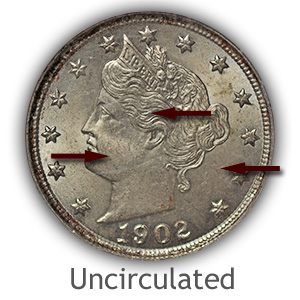
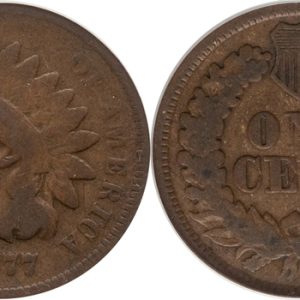
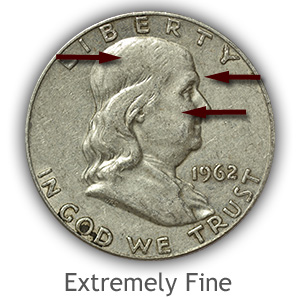
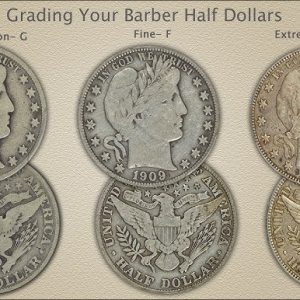
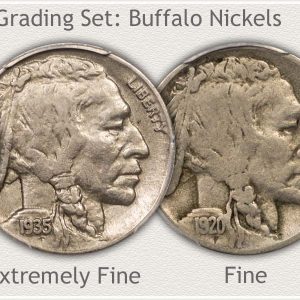
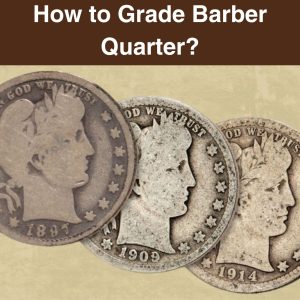
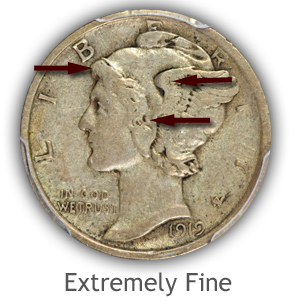

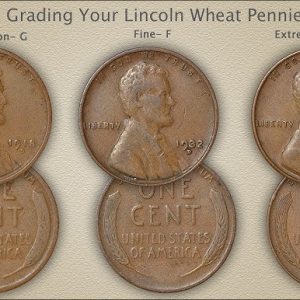
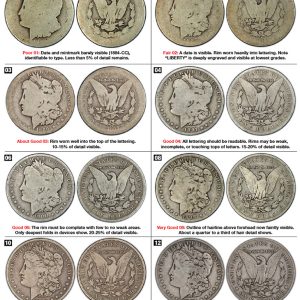
What makes a barber dime valuable?
1896-S Barber Dime Several factors, such as its low mintage, historical significance, and scarcity in high grades, make it an alluring coin to have in your collection. In circulated condition, this coin can be worth between $55 and $700.
What year is the $2000000 dime?
1894-S Barber dime. The 1894-S Barber dime is a dime produced in the United States Barber coinage. It is one of the rarest and most highly prized United States coins for collectors, along with the 1804 dollar and the 1913 Liberty Head nickel.
How to grade a coin yourself?
To grade a coin yourself, hold it by the edges under good light and use a magnifying glass to examine the design’s sharpness, the surface for scratches (contact marks) and hairlines, and the edge for wear. Compare the coin to grading scales to determine its condition based on wear, and consider the luster (shine) and overall eye appeal. Be objective, as minor imperfections can lead to incorrect grading.
Are Barber dimes junk silver?
These coins are sometimes referred to as “junk silver” because they are in circulated condition, but make no mistake: they are a wise investment, indeed. If you put away a paper $5 bill in 1965, you’d still have $5; but a roll of pre-1965 Barber dimes is now worth many, many times that!